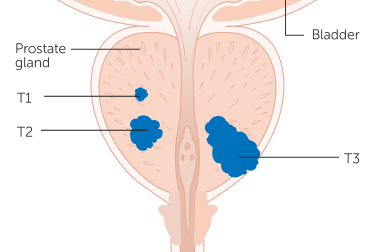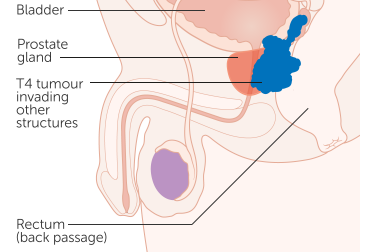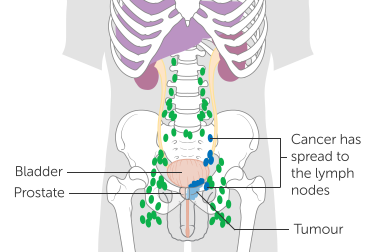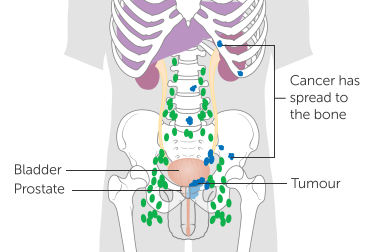Knowing the prostate cancer stage and grade will help your treatment team decide what treatment options are best for you.
What is prostate cancer grading?
The grade of the cancer describes what the cancer cells look like compared to normal cells.
This tells the treatment team how quickly the cancer is growing and the risk that it may spread to other parts of your body.
Prostate cancer Gleason score
For many years, the Gleason scoring system has been used to grade the cancer cells taken during a biopsy.
The prostate cancer is given a Gleason score from six to ten. The higher the score the more likely the cancer cells are to spread through the body.
ISUP grading system for prostate cancer
This new system grades the cancer between 1 and 5 depending on the Gleason score.
The lower the grade the less likely the cancer is to spread.
This score helps your cancer treatment team plan your treatment.
| ISUP grade |
Gleason Score |
Description |
| 1 | 3+3=6 | Cancer cells are likely to grow slowly |
| Note the difference between 3+4 and 4+3 which are both Gleason score 7 | ||
| 2 | 3+4=7 | Most of the cancer cells look likely to grow slowly. There are some cells that look more likely to grow at a moderate rate. |
| 3 | 4+3=7 | Most of the cancer cells look likely to grow at a moderate rate. There are some cells that look more likely to grow slowly. |
| 4 | 4+4=8 | All of the cancer cells found look likely to grow moderately quickly |
| Note the difference between 4+5 and 5+4 which are both Gleason score 9 | ||
| 5 | 4+5=9 | Most of the cancer cells look likely to grow moderately quickly. There are some cells that are likely to grow more quickly. |
| 5 | 5+4=9 | Most of the cancer cells look likely to grow quickly. |
| 5 | 5+5=10 | All cancer cells look likely to grow quickly. |
What is prostate cancer staging?
The prostate cancer stage describes the cancer's size and whether it has spread to other parts of your body.
Staging is done using the Tumour, Node and Metatases (TNM) system.
Tumour (T) - describes the size of the primary cancer
| Stage | Definition |
| T1 | The tumour can't be felt by the doctor or detected on ultrasound |
| T2 | The doctor can feel the tumour but it does not appear to have spread beyond the prostate |
| T3 | The tumour feels as though it has spread beyond the prostate into the surrounding tissue |
| T4 | The tumour has grown into surrounding organs such as the bladder or rectum |


Nodes (N) - the number of nearby lymph nodes that have cancer
| Stage | Definition |
| NX | Lymph nodes cannot be assessed |
| N0 | Nearby lymph nodes do not contain cancer cells |
| N1 | There are cancer cells in the lymph nodes near the prostate |


Metastasis (M) - if the cancer has spread to different parts of the body
| Stage | How far the cancer has spread |
| M0 | The cancer has not spread to other organs |
| M1 | The cancer has spread to other parts of the body beyond the pelvis |
Prognosis for prostate cancer
The prognosis is the likely outcome of a disease.
If the test results show prostate cancer, you may wish to speak with your treatment team about the prognosis.
The doctors will look at the type and stage of the cancer as well as your age and general health to give a prognosis, but no doctor can predict the exact outcome for you.

Surveillance, surgery, radiation treatment, hormone therapy or a combination are all treatment optio…

We are here to help and support you and your whānau through cancer diagnosis, treatment and recovery…

Cancer can impact not only your health but your lifestyle and relationships.

We've put together a list of questions you may wish to ask your treatment team.
We know that going through cancer is tough and can raise many questions. You are not alone.
We have health professionals to answer your questions and provide the support you need.
Get in touch
